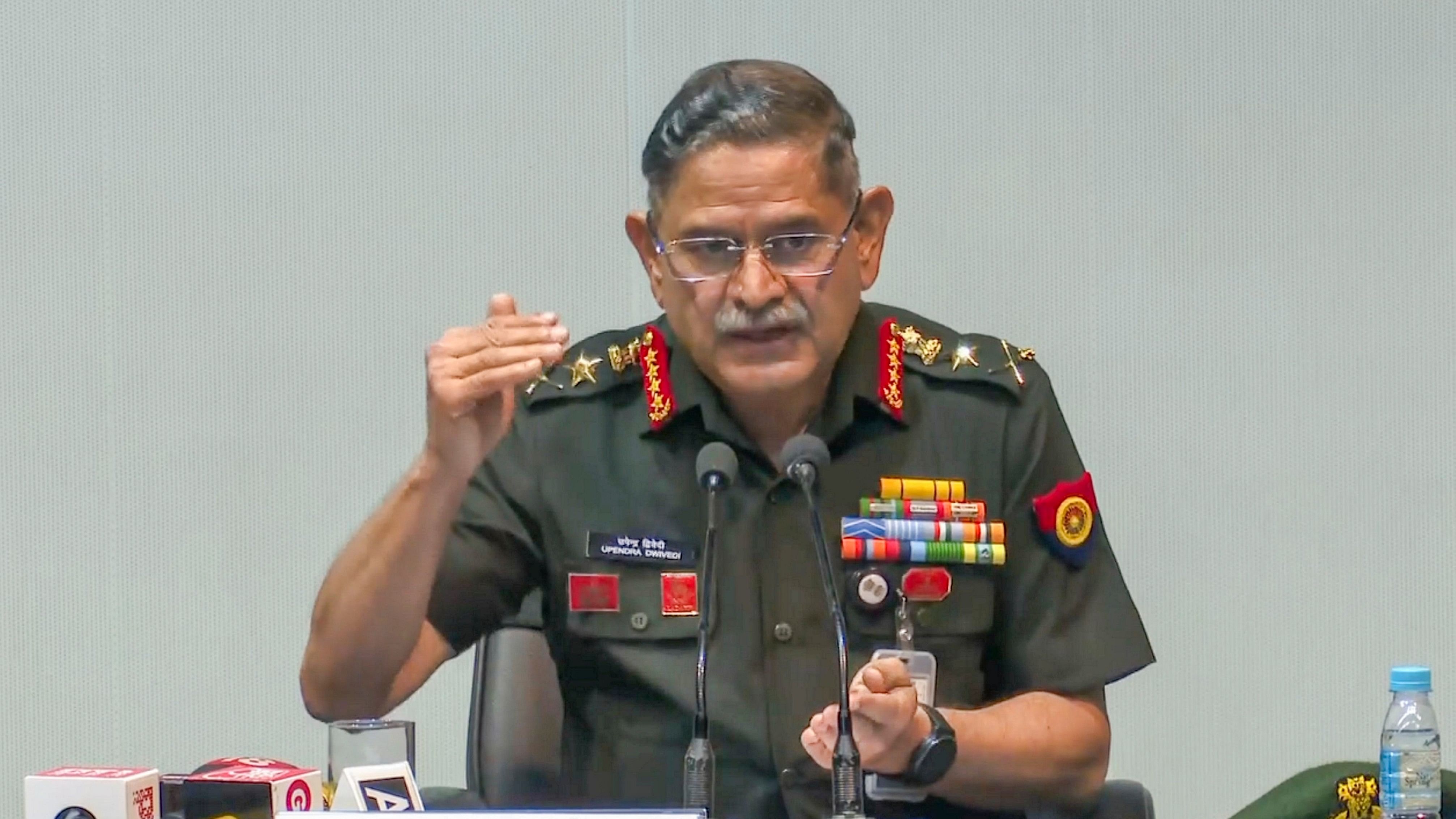
Chief of the Army Staff General Upendra Dwivedi during a press conference, in New Delhi
Credit: PTI Photo
New Delhi: Chief of the Army Staff Gen Upendra Dwivedi on Tuesday said the Indian Army would restore the trust between Indian and Chinese troops first and avoid venturing into the buffer zones, a day after External Affairs Minister S Jaishankar’s announcement on the resumption of patrolling near the remaining boundary flash points in eastern Ladakh,
“As of now we are trying to restore the trust. The trust gets restored once we are able to see each other and convince each other that we are not creeping into the buffer zones that have been created. Patrolling gives us that kind of advantage,” Gen Dwivedi said here.
Neither the Army nor the government clarified up to what point the troops will be able to patrol if they are not going into the buffer zone.
The army chief also made it clear that the breakthrough is only the first step in resolving the crisis simmering since April 2020 when the tension between border-guarding troops near the Line of Actual Control erupted leading to the Galwan episode in June.
“We want to go back to the status quo of April 2020. Thereafter, we will be looking at disengagement, de-escalation and normal management of the Line of Actual Control. And, this normal management of the LAC will not just stop there. There are phases in that also," the Army chief said.
Foreign Minister S Jaishankar on Monday said New Delhi and Beijing went back to “where the situation was in 2020” while Foreign Secretary Vikram Misri said an agreement was arrived at on patrolling arrangements along the LAC.
“As we restore the trust, other stages will follow through soon,” Gen Dwivedi said, noting that a return to pre-April 2020 position was India’s stance all along.
Once the patrolling starts, small groups of soldiers would be sent on patrolling the areas near the disputed boundary. However, with the winter likely to set in the next few weeks, the patrolling activities will stop and resume only in April-May 2025 when the snow melts.
Jaishankar’s announcement is the first major development in two years to find a solution to the eastern Ladakh crisis, paving the way for a bilateral meeting between Prime Minister Narendra Modi and Chinese President Xi Jinping at Kazan in Russia on the sidelines of the BRICS summit.
In Sept 2022, Indian and Chinese troops withdrew from the Gogra-Hot Springs (Patrol Point-15) friction point in eastern Ladakh more than two years after a tense stand-off. This was preceded by disengagement from the Galwan Valley in June 2020, from both banks of Pangong Tso in February 2021 and from Gogra Post (PP-17A) in August 2021.
Tackling the disputes involving Depsang plains and Demchok may take more time as they are legacy issues. Both sides currently deploy over 50,000 troops close to the LAC.
The conflict in eastern Ladakh – considered the most serious tussle between the two sides since the 1962 war – began in April-May 2020 with China amassing a large number of troops along the LAC, flouting the 1993 and 1996 bilateral agreements for maintaining peace and tranquillity along the boundary.
